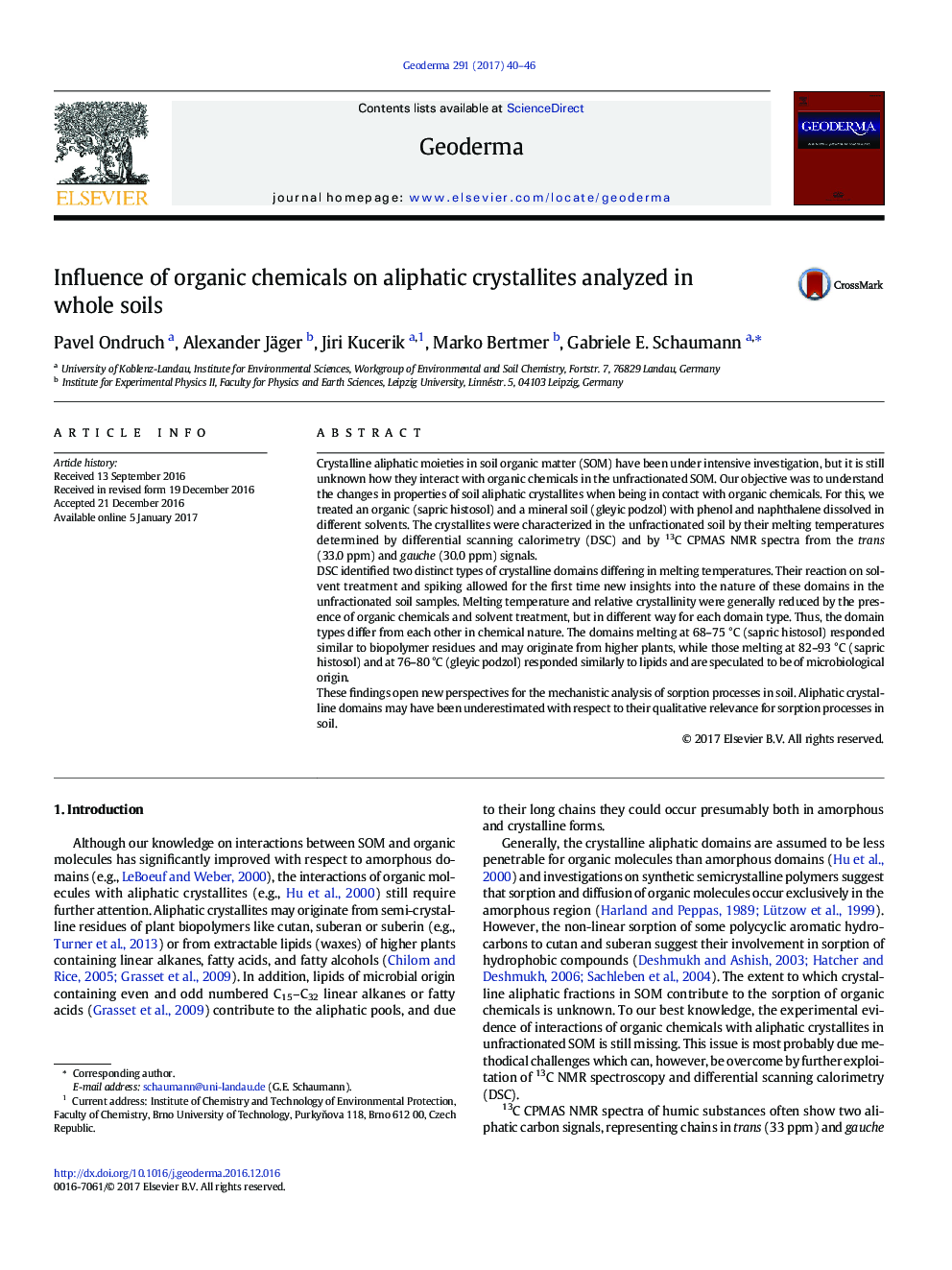| کد مقاله | کد نشریه | سال انتشار | مقاله انگلیسی | نسخه تمام متن |
|---|---|---|---|---|
| 5770413 | 1629426 | 2017 | 7 صفحه PDF | دانلود رایگان |
- Treatment with organic chemicals reduces melting point of soil aliphatic crystallites.
- DSC allows distinguishing lipid- and biopolymer-derived aliphatic crystallites in soil.
- Gleyic podzol contains only lipid-like crystallites.
- Sapric histosol contains both lipid- and biopolymer-derived aliphatic crystallites.
- 13C CPMAS NMR suggests decrease of relative crystallinity after spiking.
Crystalline aliphatic moieties in soil organic matter (SOM) have been under intensive investigation, but it is still unknown how they interact with organic chemicals in the unfractionated SOM. Our objective was to understand the changes in properties of soil aliphatic crystallites when being in contact with organic chemicals. For this, we treated an organic (sapric histosol) and a mineral soil (gleyic podzol) with phenol and naphthalene dissolved in different solvents. The crystallites were characterized in the unfractionated soil by their melting temperatures determined by differential scanning calorimetry (DSC) and by 13C CPMAS NMR spectra from the trans (33.0 ppm) and gauche (30.0 ppm) signals.DSC identified two distinct types of crystalline domains differing in melting temperatures. Their reaction on solvent treatment and spiking allowed for the first time new insights into the nature of these domains in the unfractionated soil samples. Melting temperature and relative crystallinity were generally reduced by the presence of organic chemicals and solvent treatment, but in different way for each domain type. Thus, the domain types differ from each other in chemical nature. The domains melting at 68-75 °C (sapric histosol) responded similar to biopolymer residues and may originate from higher plants, while those melting at 82-93 °C (sapric histosol) and at 76-80 °C (gleyic podzol) responded similarly to lipids and are speculated to be of microbiological origin.These findings open new perspectives for the mechanistic analysis of sorption processes in soil. Aliphatic crystalline domains may have been underestimated with respect to their qualitative relevance for sorption processes in soil.
Journal: Geoderma - Volume 291, 1 April 2017, Pages 40-46
